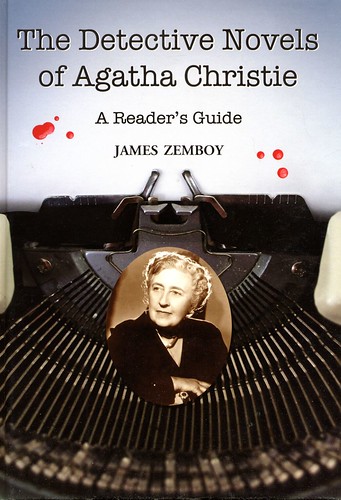
James Zemboy’s The Detective Novels of Agatha Christie, A Reader’s Guide (2008) is a reference work and an excellent one. After a short introduction with some facts on Christie’s life, her England, her writing career and the geography of her novels the book consists of entries for all detective novels in chronological order: 442 pages i.e. 884 columns in large format, on average 12 columns for each novel.
Let’s take What Mrs McGillycuddy Saw with the British title 4:50 from Paddington (1957). Five columns are reserved for ‘Setting’. The author collects an abundance of references to place and time of action. The probable locations of Rutherford Hall and Brackhampton, where the main action takes place, and Miss Marple’s St. Mary Mead and Milchester are discussed. The difference of a corridor train (where Mrs. McGillycuddy saw the murder) and non-corridor cars (where the murder was done) is explained. Rutherford Hall, though still on vast grounds, is surrounded by Brockhampton and its council estates. (One couldn’t find a better symbol for the feeling of siege, of being encircled by the lower classes.) Added are the recurring themes of the early post-war years, high taxes and the scarcity of domestic labour. No current events are mentioned but a few amusing details: Russian agents, flying saucers and for the first time the ball-pen.
It’s proved once again: inattentive readers are very much mistaken, when they maintain, that Christie’s novels depict an idealised upper-middle class England detached from reality.
In the next section “Story” (1 column) a short synopsis is given without revealing the solution. Then follows the largest part “Characters” (nearly 8 columns), where more than 80 persons are collected. That means even very minor characters like “a porter at Paddington” are given. The more important ones are characterised by a few sentences. The section “French into English” with the translation of six phrases is short here but of course larger for the Hercule Poirot novels.
“Comments” (a bit more than 3 columns) concludes the entry. Here an evaluation is given, a comparison to other novels by Christie, similarities and differences, excellencies and shortcomings. For most readers this will be the most important part. Personally I prefer “Setting”.
An appendix elucidates some British expressions and the index lists titles and characters.
Juergen Lull
Comments (0)
You don't have permission to comment on this page.